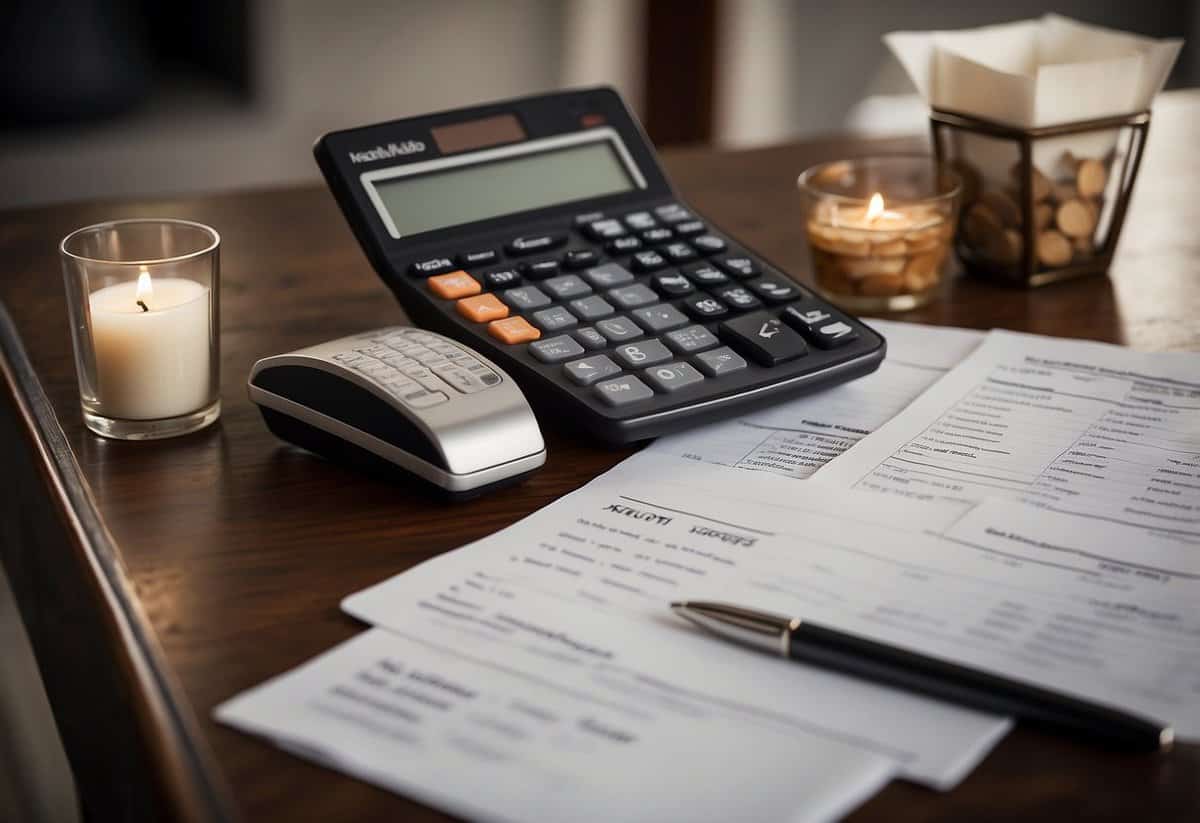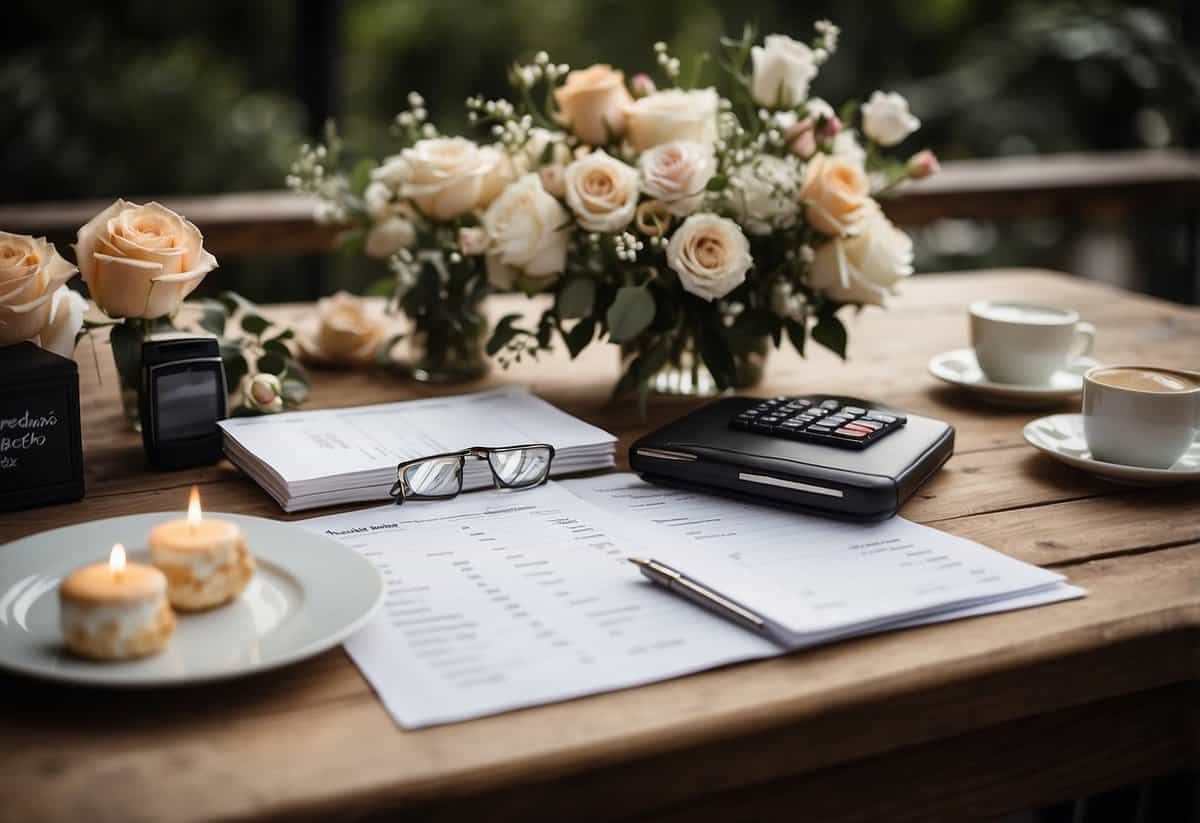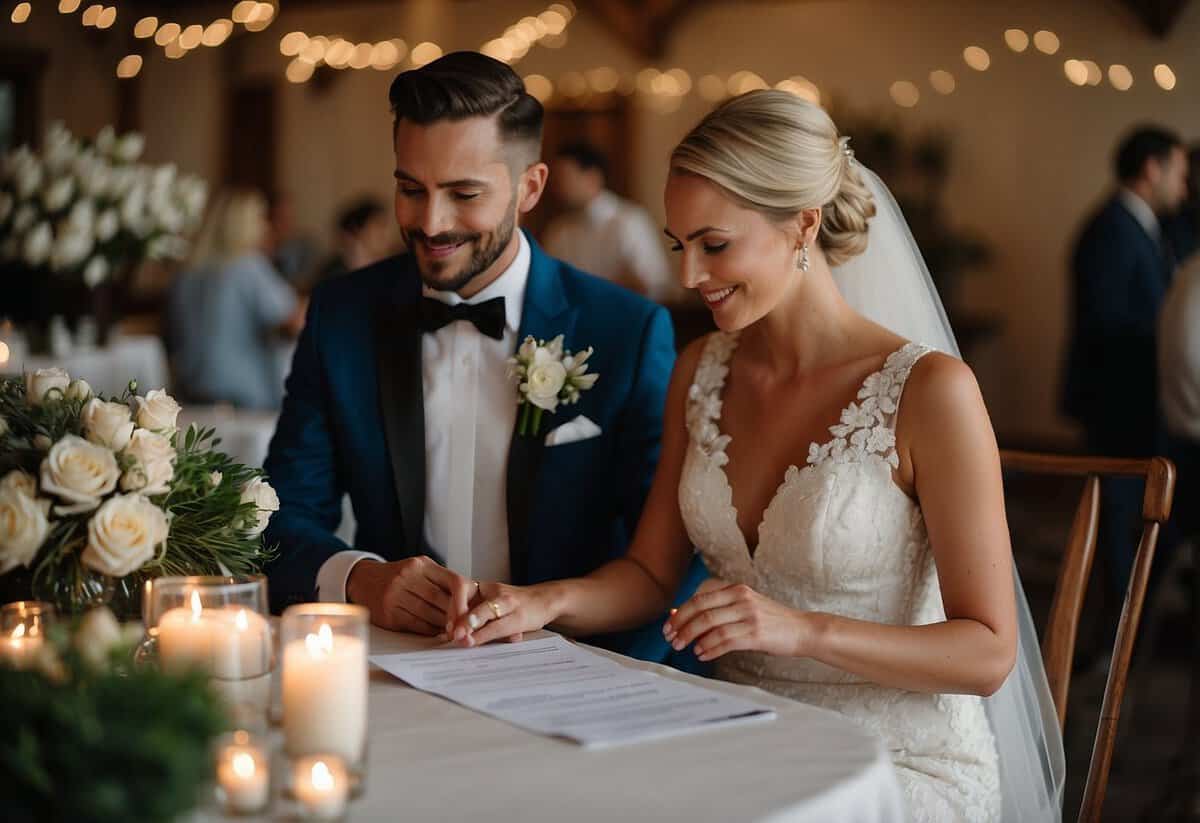What is a Good Budget for a Wedding? Practical Tips for Every Couple
Planning a wedding can be one of the most exciting yet stressful times in your life. One of the biggest concerns couples face is figuring out the right budget. A good budget for a wedding usually falls around $30,000 in the U.S., but this can vary significantly based on your location and priorities. For instance, if you choose a major metropolitan area for your venue, costs can be much higher.

When setting your wedding budget, it’s crucial to decide what elements are most important to you and allocate funds accordingly. Venue and catering often take up the largest chunk, around 50% of your total budget. Using an online wedding budget tool can help simplify the tricky math and ensure you stay within your means.
Familiarize yourself with common wedding budget mistakes to avoid unnecessary stress. Focusing on essentials first can help you manage your finances better and enjoy your special day without any financial regrets. By prioritizing wisely, you can create a memorable wedding without breaking the bank.
Understanding Your Wedding Budget

Planning for a wedding involves several key steps to ensure you stay on track financially. It’s crucial to understand realistic budgets, average wedding costs, and how to use budgeting tools effectively.
Setting Realistic Expectations
Start by setting a realistic budget. Know how much you can afford before diving into the details. A $50,000 wedding isn’t possible on a $10,000 budget.
Prioritize the elements you value most. If photography is vital to you, allocate more funds there. Understand that unexpected costs can arise, so having a small cushion is helpful.
Make sure to discuss your expectations with your partner. Both of you need to agree on what’s essential and where you can cut costs.
The Average Wedding Cost
On average, wedding costs can vary widely. Most couples spend between $20,000 and $40,000 on their wedding. Factors like location, guest count, and personal preferences impact the total cost.
Attire typically takes up 7% of the budget. Your wedding dress, suit, shoes, and accessories fall under this category.
Venues and catering are often the largest expenses. Some couples splurge on photography or an open bar. Knowing these costs can help you plan better.
Creating a Budget Spreadsheet
A budget spreadsheet is a valuable tool. It helps you track every expense, from venue to flowers. Start by listing all potential expenses, then assign a budget to each category.
Online wedding budget tools can also assist in monitoring your expenses. Tools from sites like The Knot offer templates that can simplify this process.
Update your spreadsheet regularly. It’s essential to keep it current with actual costs versus estimates. Regular reviews help you stay within your budget and make timely adjustments.
Allocating Your Budget Effectively

Planning your wedding budget involves breaking it down into categories, prioritizing what matters most, and finding smart ways to save. Below, we explore the key considerations to help you allocate funds effectively.
Wedding Budget Breakdown
Start by understanding how to divide your total budget. According to The Knot and other experts, here’s a helpful breakdown:
| Category | Percentage of Budget |
|---|---|
| Venue and Catering | 40-50% |
| Photography/Videography | 10-15% |
| Attire and Beauty | 5-10% |
| Music/Entertainment | 10% |
| Flowers/Decor | 10% |
| Favors/Gifts | 2-5% |
| Transportation | 2-5% |
By using this breakdown, you can track your spending and ensure each aspect of your wedding is covered.
Determining Top Priorities
Think about what’s most important to you on your big day. Do you care more about stunning photos or having the best DJ in town? Allocate more budget to what matters most to you. For many, photography is a top priority because great photos last a lifetime.
Make a list of your top priorities and discuss them with your partner. Don’t forget to consider things like a memorable venue and good food, which guests will remember. Knowing your priorities helps ensure you’re spending money where it counts the most.
Ways to Cut Costs Without Compromise
You can save money without skimping on quality. Here are some effective tips:
- Choose an off-peak date: Weekday weddings or off-season dates often cost less than popular times.
- Limit the guest list: Fewer guests mean lower costs for catering and venue.
- DIY decorations: Craft your own decorations to add a personal touch and save money.
- Streamline your invitations: Use digital invites to save on printing and postage.
- Reuse flowers: Use ceremony flowers at the reception to cut down on florist costs.
By using these strategies, you can keep your wedding beautiful and memorable without breaking the bank.
Essential Costs to Consider

When planning your wedding budget, it’s important to account for some key expenses. These include the costs of the venue, catering, photography, videography, attire, beauty, music, and entertainment. Careful planning in these areas will help you keep your day both beautiful and within budget.
Venue and Catering
The venue is likely the most significant part of your budget. Prices can vary widely depending on location and the type of venue you choose, such as a hotel, vineyard, or beach. Always ask what’s included in the rental fee. Sometimes it includes tables, chairs, and linens, while other times it doesn’t.
Catering is another major expense. Depending on the menu and number of guests, it can quickly add up. Consider a buffet or a sit-down dinner based on your budget. Don’t forget to ask about beverages, as some venues might offer alcohol packages.
Photography and Videography
Capturing the special moments of your wedding is crucial. Hiring a professional photographer and videographer ensures quality. Packages can range from a few hours of coverage to full-day services. Make sure to look at their portfolios and read reviews.
Some couples choose to hire just a photographer, while others also invest in videography to capture live moments and vows. This decision largely depends on your budget and how you would like to remember your day.
Attire and Beauty
Your wedding attire and beauty accessories will include your dress, suit, shoes, and any jewelry or cufflinks. On average, couples spend around 5-7% of their total budget on attire. Make sure to account for alterations, which can add to the cost significantly.
Beauty services such as hair and makeup are essential for looking your best. You might also want to book trials before the big day to ensure everything turns out perfectly.
Music and Entertainment
Music and entertainment set the tone for your celebration. Options include live bands, DJs, or a mix of both. A DJ typically costs less than a live band but can still create a lively atmosphere.
Consider additional entertainment like photo booths, dancers, or even a caricature artist. These can add fun elements to your wedding but should be considered based on how much entertainment matters to your celebration.
Each of these categories plays a vital role in making your wedding memorable. By planning carefully and setting priorities, you can make the most of your budget.
Selecting Your Vendors Carefully

Choosing the right vendors for your wedding can make all the difference in how smoothly your day goes. It’s important to spend time doing adequate research and being thorough in your contracts to ensure everything is covered.
Researching Vendors
Start by talking with friends and family who recently got married for vendor suggestions. Personal recommendations are often the most reliable. You should also check reviews online and visit vendor websites to see their work and read what other couples have said about their services.
When considering vendors like your wedding planner, photographer, and caterers, make sure to look at their portfolios. This helps you understand their style and if it matches your vision. For instance, a photographer’s past weddings can show their ability to capture important moments.
Another tip is to attend wedding fairs or expos. These events allow you to meet potential vendors face-to-face and ask them questions. Don’t rush this process. Taking your time to choose the right vendors is crucial for your peace of mind and a successful wedding.
Vendor Contracts
Carefully reviewing vendor contracts before signing is essential. Each contract should specify what services you’re getting, the cost, payment schedules, and cancellation policies. This protects both you and the vendor from misunderstandings.
Make sure the contract includes the catering cost in detail if food is involved. It should list what’s included in the price, such as table service, beverages, and tips for staff. When dealing with your wedding vendors, ensure they cover any additional fees that might arise.
Don’t hesitate to ask for amendments if something seems unclear or unfair. Having everything in writing means you have a backup plan if something goes wrong. Consulting with your wedding planner or a legal advisor can help you navigate the language and clauses in vendor contracts.
Finalizing Your Wedding Details

When finalizing the details for your wedding, it’s essential to focus on the key components that bring everything together. Important elements include invitations and stationery, flowers and décor, and reception details. Paying close attention to these aspects will ensure a seamless and beautiful celebration.
Invitations and Stationery
Your invitations set the tone for your wedding. Choose a design that reflects your wedding theme and style. Think about the paper quality, typography, and colors. You may also want to include RSVP cards, thank-you notes, and save-the-dates.
Custom stationery can be more expensive, but it adds a personal touch. If you’re on a budget, consider digital invitations or DIY options. Make sure to order your invitations early to give guests time to plan, and don’t forget to budget for postage.
Flowers and Décor
Flowers and décor play a significant role in creating the atmosphere of your wedding. Consider the seasonal availability of flowers to help manage costs. Common choices include roses, lilies, and peonies, but locally sourced blooms can be more budget-friendly and add a unique touch.
Décor involves more than just flowers. Think about lighting, centerpieces, and wedding favors. Candles, lanterns, and fairy lights can create a romantic ambiance. Coordinate your flower arrangements and décor to match your wedding colors and theme, ensuring a cohesive look throughout the venue.
Reception Details
The reception is where your guests will spend most of their time, so it’s crucial to get the details right. Start with the reception venue, making sure it suits your guest count and wedding style. Plan your menu, including the cake and dessert options.
Don’t forget about the entertainment. Whether it’s a band, a DJ, or a playlist, the music sets the mood for the celebration. Lighting is also vital. Consider string lights, uplighting, or chandeliers to transform the space. Finally, think about wedding favors and gifts for your guests as a token of appreciation for their attendance.




